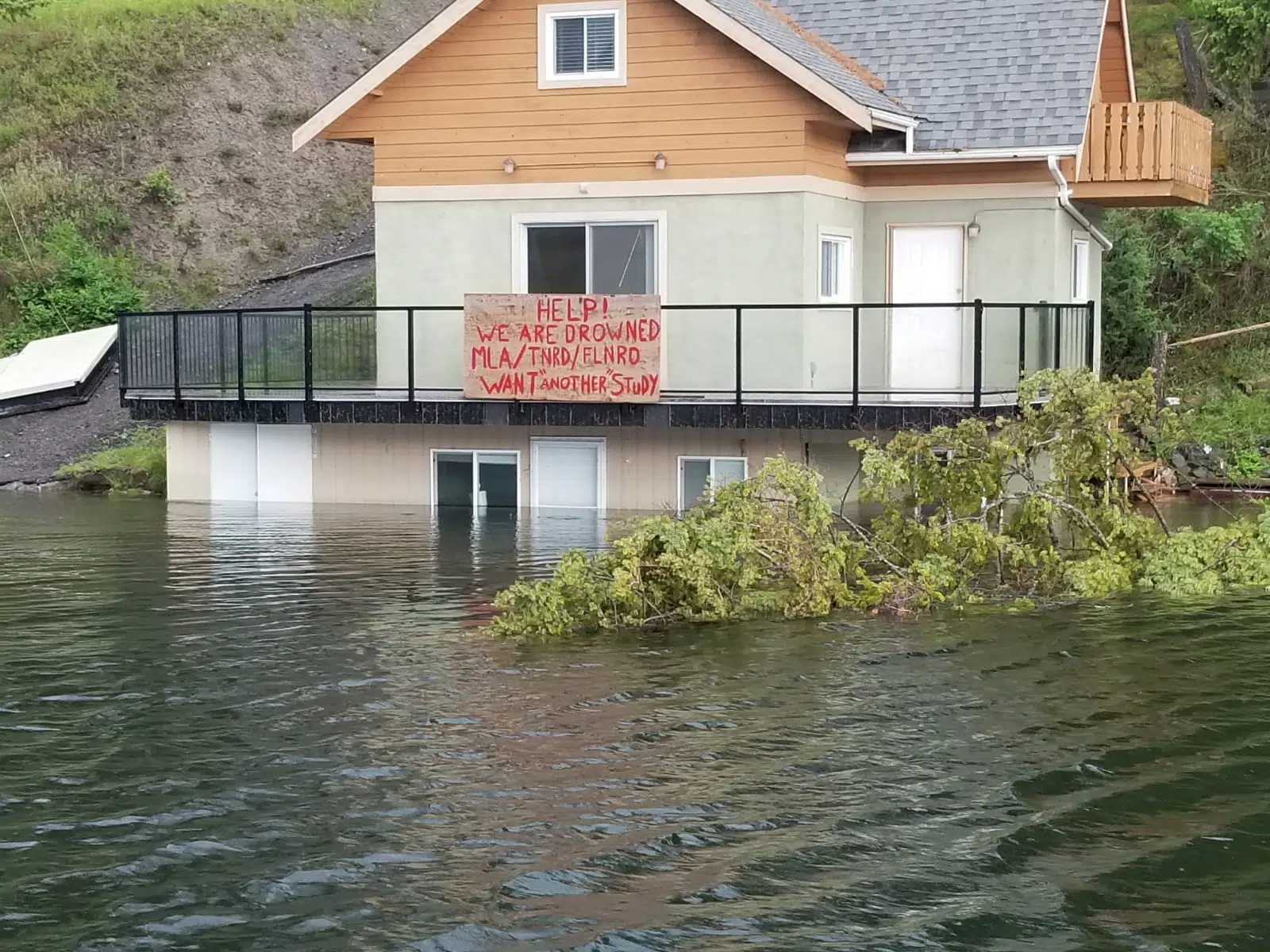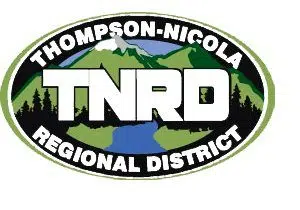
While the Thompson Nicola Regional District is about to study the impact downstream if water is drained from Stump Lake, a study was done two years ago showing ways to drain water to immediately prevent flooding for residents.
According to the study done by Kerr Wood and Associates after its engineers visited the site on April 28, 2018, Stump Lake, south of Kamloops, filled up by more than a full metre in 2017 during a heavy spring freshet. But water at that lake, which the report says hasn’t had an outflow for more than 30 years, only evaporated by 0.4 metres that summer.
Since then, nearly two-dozen properties have flooded for three straight years.
The report, provided to NL News, gave the TNRD four options.
Three of those involved letting out water through the lake’s natural outflow at its south end, which is currently filled in by a berm. Those options were to pump water out, to siphon water or to excavate.
It said pumping water or siphoning water would be more costly, short-term fixes and would not provide long-term flood prevention. The TNRD says this essentially ruled out those two options.
Project costs of those options varied, from several hundred thousand dollars to $3 million, which is what the province spent this year as a stopgap measure along Highway 5A to raise parts of the highway, after it was flooded from rising waters on Stump Lake.
A fourth option was to do nothing.
“The ‘do nothing’ option would result in flooding of certain properties around the lake,” the report says.
“Regardless of what steps are taken this year, further permanent measures are likely to remain necessary. Such could include outlet control works… or raising/ relocation of low buildings,” it says.
The report showed a natural outflow at the lake, Stumplake Creek, which would eventually flow into Nicola Lake if water were released. It shows that along the creek’s route there are culverts at Highway 5A and at a private road, and that there are several dams along the creek’s route.
One of those dams is at the Guichon Ranch, a multi-generational ranch which is owned and operated by Judith Guichon, B.C.’s former Lt. Governor from 2012-2018. There is also a culvert under the driveway to Guichon’s home that the creek would flow through. The report says “it appeared the water would flow through a field and pond upstream of the driveway culvert.”
NL News took a tour of Stump Lake earlier this month on a pontoon boat with local residents, where century-old trees are submerged and dead. Meanwhile, the lake is hundreds of metres past high-water marks in some places, and a number of homes have water that is several feet high in their basements.
One home, pictured above, has a sign reading “Help! We are drowned. MLA/ TNRD/ FLNRO [Ministry of Forests, Lands and Natural Resource Operations] want another study.”
Residents say the lake needs to have its outflow restored.
“Just lower the lake a bit, not a lot. I’m sure it will pass through everybody’s property just fine and go down. July, August especially when they need the water, right through to the end of November until freeze up, would be ideal,” Stump Lake resident Devin Nickle says, who is one of many residents that has been laying sandbags for months and still has significant property damage from flooding.
“The damage, the environmental damage. Sandbags floating all over the place, the buildings that are getting damaged. I don’t even know how much I’ve lost. It’s just such a simple fix, and we’ve shown them there’s a creek there.”
Ron Storie, director of community services with the TNRD, says he sympathizes with property owners at Stump Lake. But he says another study is needed before water is released, saying the effect that releasing water could have downstream still needs to be determined.
“When I say downstream, I’m talking about ranchers, the Upper Nicola Indian Band, folks who live downstream on Nicola Lake and even further. Because when you move water from the upper lake, at Stump, through the Nicola and downstream, you’re going to impact those users.”
Storie says that study will show how much water can be released safely, in particular during the snow melt.
He says it will also consider all relevant documents like the Nicola Water Management Plan, as well as hydrology, hydro-technical assessments, climate data, designs, cost criteria and assumptions for a potential lake control outlet and structure.
A timeline for the study is unclear, but the provincial government has indicated it wants it to happen this summer.
In the immediate forecast, Storie says the TNRD doesn’t plan to declare a state of local emergency at Stump Lake, saying the rising lake is not a life-or-death situation for residents.
“A state of emergency is usually done when people’s lives are at risk. As you remember, in Cherry Creek and Guichon Creek in 2018 and 2017, there was mass flooding. Lives were at risk, water was running through people’s houses.”
– with files from Curt Appleby










